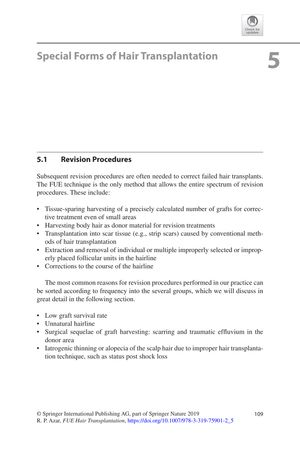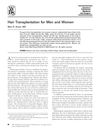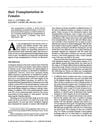Special Forms of Hair Transplantation
November 2018
in “
Springer eBooks
”
hair transplantation Follicular Unit Extraction FUE body hair transplantation scalp donor hair graft survival rates extraction methods beard hair scalp transplants hair shaft diameter eyebrow transplantation 1-hair follicular units 2-hair follicular units natural appearance eyelash transplantation scalp hair follicles postoperative care hair loss rate new growth beard transplantation graft survival rate hair transplant body hair transplant donor hair graft survival eyebrow transplant eyelash transplant post-op care hair loss new hair growth beard transplant

TLDR The document concludes that specialized hair transplant techniques can be effective, with varying success rates depending on the donor area and patient factors.
The document from 2018 discusses specialized hair transplantation techniques, including the use of Follicular Unit Extraction (FUE) for revision procedures and body hair transplantation for patients with insufficient scalp donor hair. It highlights the challenges of achieving high graft survival rates, which should ideally be between 80% and 100%, and the factors that can affect these rates, such as extraction methods and patient health. Beard hair is noted as a suitable donor source for scalp transplants due to its thickness and ability to adapt, with a potential decrease in hair shaft diameter after transplantation. The document also covers eyebrow transplantation, which has a higher success rate in patients with undamaged skin and requires the use of 1-hair or 2-hair follicular units for a natural appearance. Eyelash transplantation is discussed, with scalp hair follicles used as donor hair and a need for patients to trim the new eyelashes. Postoperative care for eyelash and beard transplantation is outlined, with a hair loss rate of 50-100% expected before new growth begins. Beard transplantation has a good prognosis with a 70-100% graft survival rate. The document does not provide specific numbers of participants in any studies, limiting the strength of the evidence presented.



